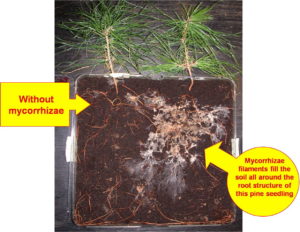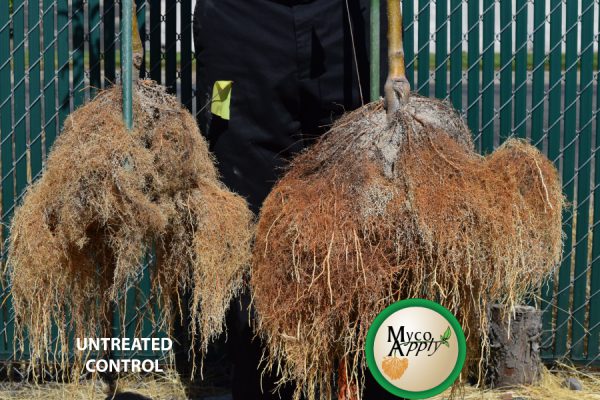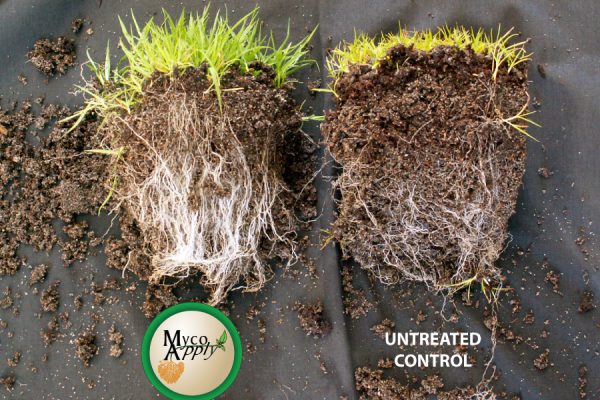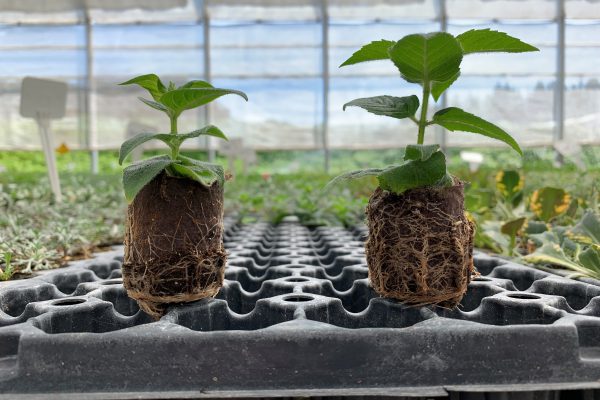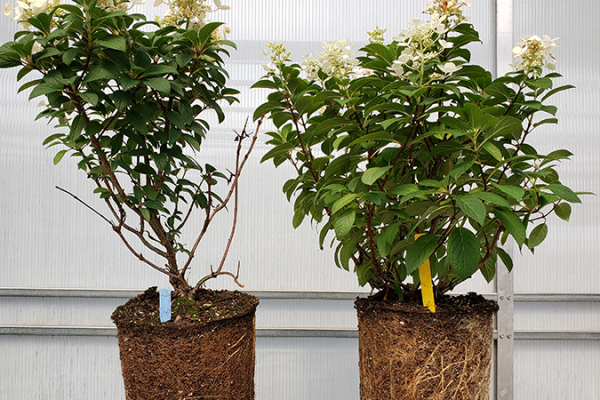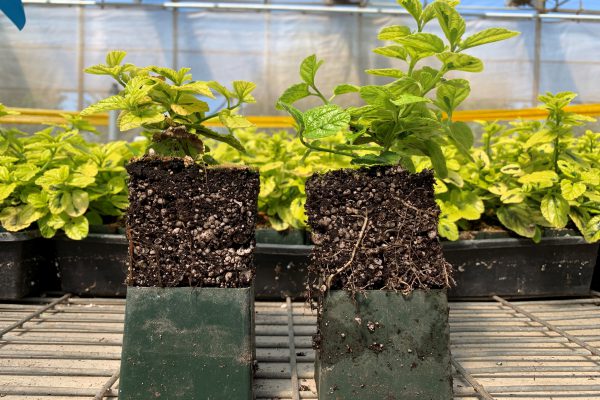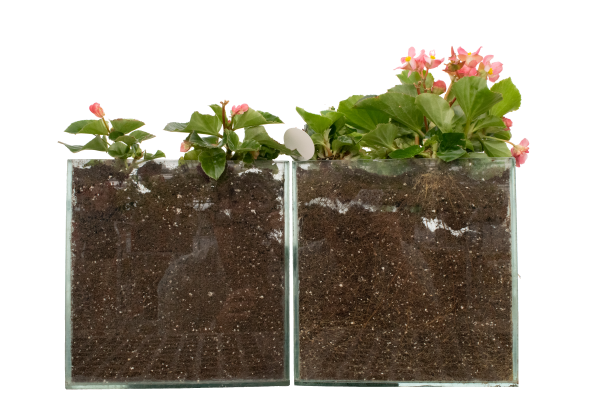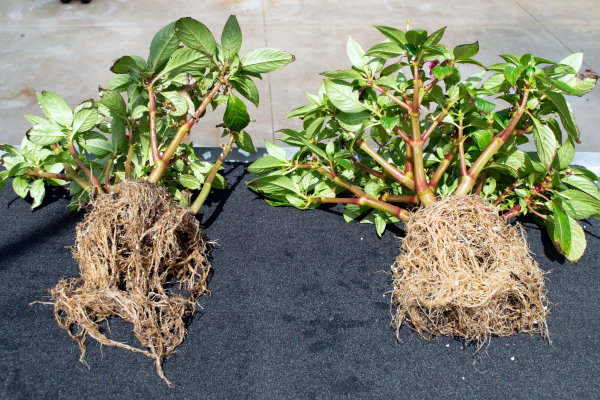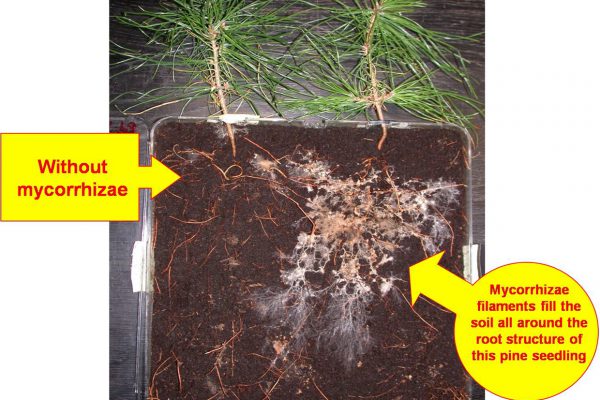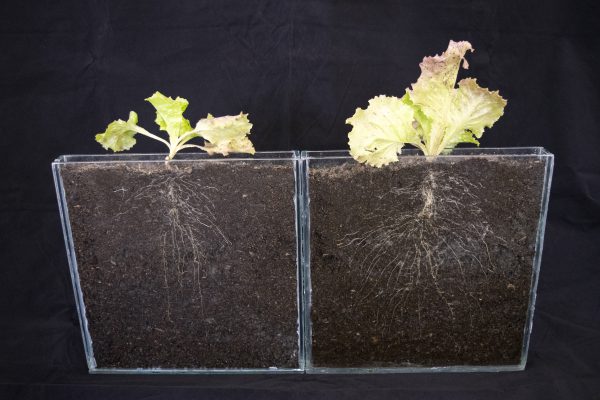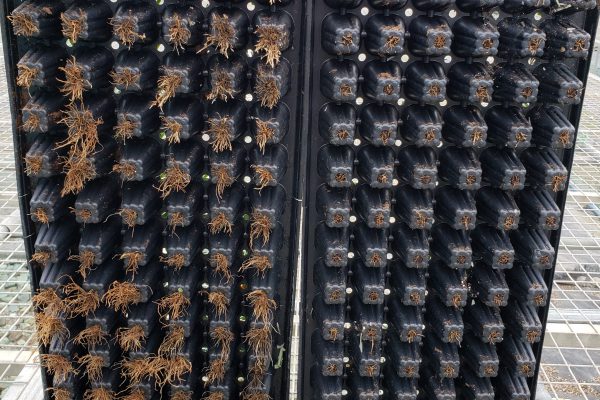Root system enhancement is one of the most fundamental ways in which mycorrhizal fungi benefit plant development, and is the “root” of most of the other direct benefits that mycorrhizae provide to plants. The plant’s roots are the interface of the symbiotic relationship between mycorrhizal fungi and plants. Mycorrhizae physically interact with roots in many ways. Endomycorrhizal fungi (also known as Arbuscular Mycorrhizal Fungi or AMF) have a profound physical effect on a plant’s root system, as they actually create structures within the plant root’s cortical cells. These structures include:
-
Arbuscules
- These are branching microscopic bundles of mycorrhizal material that form within individual cortical cells. They look like tiny root systems within the cell.
- These structures are the actual site of the symbiotic resource exchange between the plant and the fungi.
-
Vesicles
- These are storage structures that also form within the root cells, and are able to store resources for the fungi and plant, mainly in the form of lipids.
-
Intracellular Hyphae
- Microscopic fungal threads also grow into the plant’s roots in order to connect the structures within the root’s cellular structure with the hyphal network that forms outsize of the root and out into the rhizosphere (extraradical hyphae).
- These structures also act as a sink/storage area for resources in case of stress, drought, etc.
-
Spores
- Some spores will also form within the plant’s roots, for future reproduction of the mycorrhizal structures in the event of plant death at the end of the growing season (for annuals).
Collectively, these Endomycorrhizal structures that form within the plant’s root system change the root’s morphology, and can stimulate growth, development, branching, etc. This effectively improves and accelerates rooting, and adds to the plant’s natural absorptive surface area.
And through this symbiotic interaction, the hyphae and fungal structures that extend outwards from the plant’s roots are acting as a living secondary root system for the plant, which has a huge effect on the plant’s overall absorptive surface area (roots and mycorrhizal hyphae combined), and allows the plant to source and utilize resources that would not be available by the plant’s root system alone.
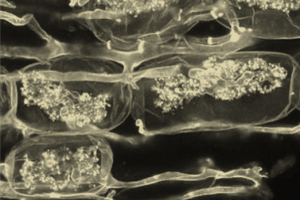
Endomycorrhizal Arbuscules in Root Cortical Cells
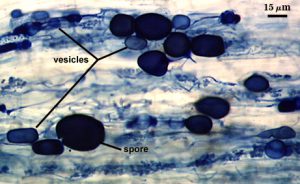
Endomycorrhizal Vesicles and Spores Within Plant Root
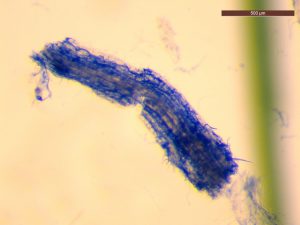
Extent of Intracellular AMF Structures in Plant Root Segment
Although they do not penetrate withing the root’s cells, Ectomycorrhizal fungi also have a profound effect on plant root development, though these types of mycorrhizal fungi have evolved different mechanisms with which to interact with plants at the root.
The structures formed by Ectomycorrhizae to interface with plant’s roots are entirely intercellular, and do not penetrate the root system’s cell walls. The symbiotic structures in which the fungi exchange resources with the plant consist of a latticework of highly-branched hyphae between the epidermal and cortical structures of the plant’s roots, known as a “hartig net”. Also unlike Endomycorrhizal fungi, Ectomycorrhizae form a dense sheath of hyphae encompassing the root known as a “mantle” which is able to provide additional protection and benefits to the plant’s roots.
And although these mechanisms do not resemble the Endomycorrhizal symbiotic structures, they have a similar effect on root morphology, increasing and accelerating rooting and promoting increased branching. Ectomycorrhizae also produce wide-reaching extraradical hyphae that grow far out into the soil in order to source, extract, and deliver resources to the plant, acting as a living extension of the plant’s own root system. This also has an exponential benefit to the plant’s effective absorptive surface area with which to mine resources from the rhizosphere.
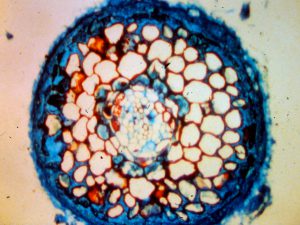
Ectomycorrhizal Root Cell Cross Section Showing Hartig Net and Mantle
